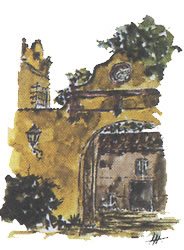ISO 22551: 2020. Fine ceramics (advanced ceramics, advanced technical ceramics) - Determination of bacterial reduction rate by semiconducting photocatalytic materials under indoor lighting environment - Semi-dry method for estimating antibacterial activity on the actual environmental bacteria contamination Surface.
Test not accredited in our laboratory.
The ISO 22551 standard establishes a test method to determine the antibacterial reduction rate of materials containing a photocatalytic material on the active surface under indoor lighting, simulating the conditions of a real indoor lighting environment. Recently, it was discovered that the results of the ISO 17094 laboratory test, for the analysis of the antibacterial activity of photocatalytic products activated by indoor lighting, differed from the results obtained in evaluations in a real environment. Therefore, it is recommended to complete the results of the ISO 17094 test with this test that measures the reduction of viable bacteria after a period of illumination by testing materials with impurities similar to those found in a real indoor lighting environment. The ISO 22551 standard assumes the testing of surfaces involving a high potential for possible human contact with bacteria and is designed to evaluate the suppression of contact infection using an active photocatalytic material under indoor artificial light in an indoor lighting environment. For this, the photocatalytic material is inoculated with bacteria suspended in a dispersion medium that simulates human sebum.
The test is designed for use with different types of photocatalytic active materials under indoor lighting used in construction such as flat sheets, boards or plates, but it is not applicable to powdered, granular or porous photocatalytic materials, or in fabrics or textiles. The surface of the test piece is uniformly inoculated with bacterial suspension suspended in the dispersion medium with a cellulose non-woven fabric. Two bacteria are used in the test: Staphylococcus epidermidis and Escherichia coli. The inoculated test piece is placed in a Petri dish and a glass plate is placed on top of the Petri dish for moisture conservation. The Petri dish containing the test piece is exposed to artificial light. After exposure to indoor lighting, the test bacteria are recovered from the test piece with a wash suspension and the viable bacteria in the suspension are counted.
The customer must specify the circumstances where the materials are used, in order to irradiate the material with one intensity or another of radiation. The standard indicates an illuminance or test illumination level of 1000 lx ± 50 lx, but adds that this luminance can be adapted between 100 lx ± 5 lx and 3000 lx ± 150 lx to take into account the actual conditions of use of the photocatalytic material. The exposure time to indoor lighting indicated by the standard is 4 hours. However, the standard also specifies that this exposure time to indoor lighting can be shortened up to 2 hours to take into account the real conditions where the photocatalytic material will be used, so the applicant must choose it. Finally, the ambient temperature of the test must be within the range of 25 ± 3ºC and the relative humidity between 50% and 70% and must be selected to simulate the environment where the material will be used.
For this test, square pieces of the test material measuring 50 ± 2 mm x 50 ± 2 mm, and whose thickness should not exceed 10 mm, are used. Both pieces treated with the photocatalytic material are used, as well as control pieces, with the same characteristics, but without the photocatalytic treatment. The number of test pieces is 15 for each test bacteria (9 untreated pieces and 6 pieces treated with the photocatalytic material). The pieces are used in the following groups: 3 units without photocatalytic product to quantify the inoculum control; 3 units with photocatalytic product and another 3 units without photocatalytic product to keep in the same test chamber without exposure to artificial interior lighting; and 3 units with photocatalytic product and another 3 units without photocatalytic product to keep in the same test chamber with exposure to artificial interior lighting. Therefore, to carry out the complete test, the client must send a minimum of 30 test pieces (18 pieces not treated with the photocatalytic material + 12 pieces treated with the photocatalytic material). However, it is always recommended to send twice the number of pieces required (60 pieces: 36 without photocatalytic and 24 with photocatalytic treatment).
Once the test of exposure of the test material to the inoculums and artificial interior lighting has been carried out, the bacteria existing on each of the surfaces are quantified, and the reduction rate of the viable bacteria is calculated.



